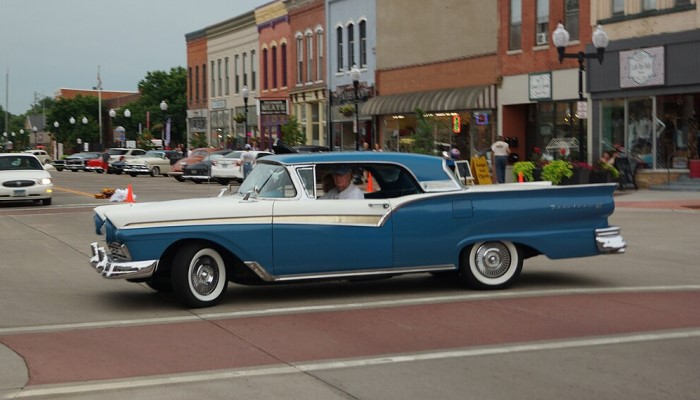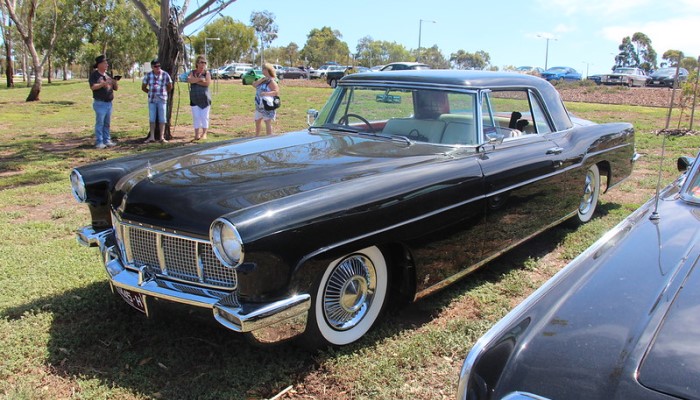Edsel Citation
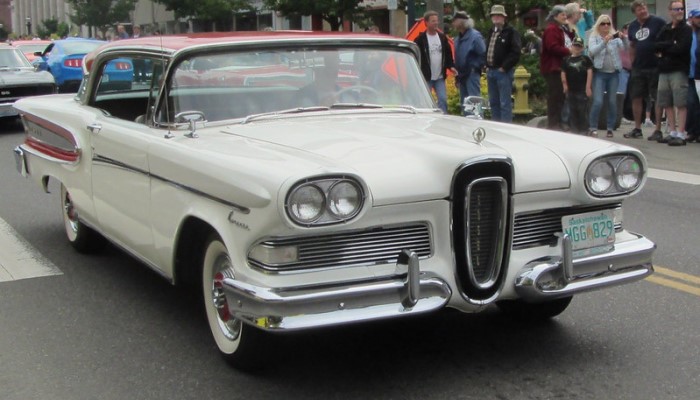
Photo: "1958 Edsel Citation" by Hugo-90
Tale of Ambition, and Ultimate Failure
The development of the Edsel, named after Henry Ford's first son, began in 1955. The car was intended to fill the niche formed by the Ford Company in the mid-priced car market. In the mid-fifties, this market share belonged to such brands as Pontiac, Buick, and Dodge.
The first Edsel car was produced in 1957. This year did not become favorable for him, although it seemed that the market was bottomless. Ford's Edsel division planned to produce 100,000 cars a year. But reality did not allow these plans to come true. During 1958, only 26,563 cars were built; the following year, 29,677 cars rolled off the assembly line.
The model rolled into bankruptcy, and in November 1959, the last Edsel was released, redesigned for the 1960 model. Four models were offered in the Edsel series: "Ranger" and "Pacer" on chassis with a wheelbase of 116 and 118 inches (2,946 mm), and "Corsair" and "Citation" with a wheelbase of 124 in (3,150 mm).
Cars were produced with bodies of two- and four-door hardtops, two- and four-door sedans, convertibles, and cargo-passenger cars ("Villager" and "Bermuda").
The most characteristic and memorable feature of Edsel cars was the cowl-shaped radiator lining, graceful horizontal taillights and original interior colors.
The cars were equipped with a push-button automatic transmission shifter, the buttons of which were located in the middle of the steering wheel and an unusual rotating drum speedometer.
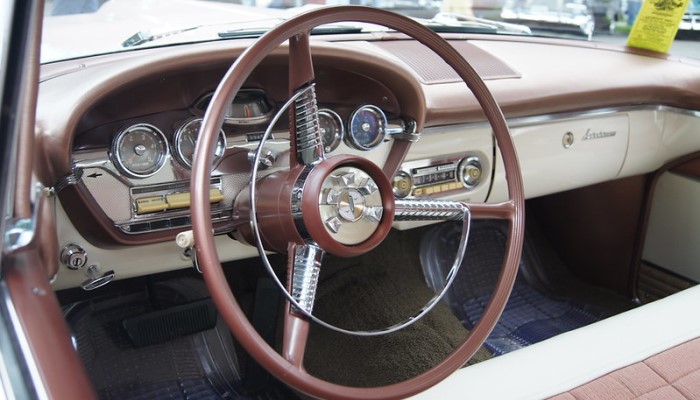
The cars were equipped with V-shaped eight-cylinder engines of various sizes and capacities.
The Ranger had a 361 cu in (5.9-liter) engine with a capacity of 303 hp, the same as on the Corsair and Citation station wagons, and for the sedans of these two series, a power unit with a working volume of 410 cu in (6.7 liters) and 345 hp.
The Edsel was a very fast car and had a top speed of 118 mph (190 kph).
Father of the Edsel
The man behind the infamous Edsel cars was none other than one of the most celebrated automobile designers of his time - Roy Brown Jr. Dubbed as the "father of the Edsel", Brown spent years perfecting the design of the car that was meant to be the showstopper of the Ford Motor Company's lineup.
Despite his best efforts, the Edsel turned out to be a commercial failure, but Brown's legacy as a master designer remained intact. His work on the Edsel has been studied and discussed for decades, solidifying his place in automotive history.
Why did the Edsel Fail?
The story of the Edsel is a classic tale of ambition, hope, and ultimate failure. In the late 1950s, the Ford Motor Company embarked on an audacious project to create a new brand of automobiles that would shake up the market and capture the attention of American consumers.
The result was the Edsel, a stylish vehicle that promised innovation and excitement. Despite a massive advertising campaign, however, the Edsel never caught on with the public. Sales were dismal, and within just a few years, the brand was discontinued.
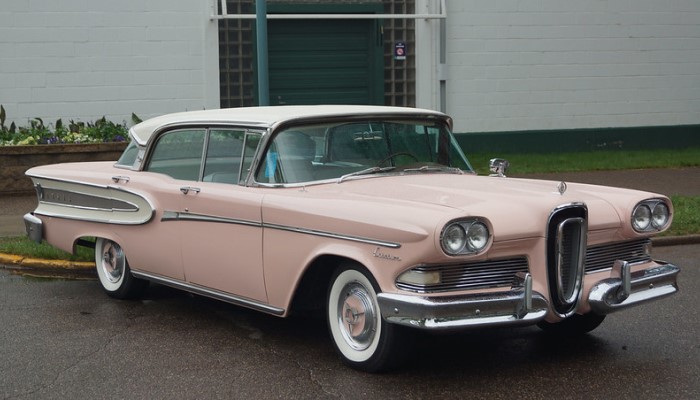
Photo: "1958 Edsel Citation" by Greg Gjerdingen
But why did the Edsel fail? There are many theories and explanations, ranging from poor timing to bad luck to outright incompetence.
One of the most commonly cited reasons for the Edsel's failure was its perceived lack of quality. Many consumers complained about problems with the cars, including leaks, faulty transmissions, and electrical issues. Some critics also pointed to the Edsel's divisive styling, which featured a distinctive "horse collar" grille that many found unappealing.
Another possible factor was the state of the economy at the time. The late 1950s saw a recession, and many consumers were more focused on saving money than on buying a new car.
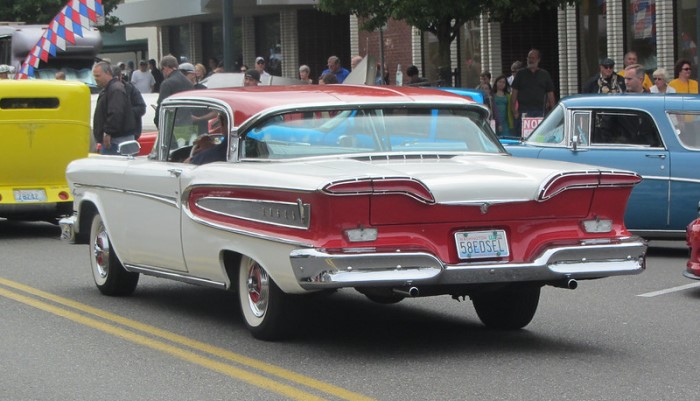
Photo: "Cruise on Colby" by Hugo-90
Additionally, the burgeoning popularity of smaller, more fuel-efficient cars may have contributed to the Edsel's lackluster sales. Finally, some experts argue that the Edsel failed because it was simply too ambitious. Ford poured millions of dollars into developing and marketing the brand, but ultimately, it couldn't live up to the hype.
In the end, the story of the Edsel serves as a cautionary tale about the perils of overreaching and underdelivering in the world of business.
In Today's Market
Gone are the days when the Edsel was considered a flop. In fact, its unique design and limited production have made it a coveted item for those looking to add a touch of originality to their car collection.
With its iconic "horse collar" grille and eye-catching colors, the Edsel stands out among other vintage cars, capturing the attention of passerby and enthusiasts alike.
But what is the price tag attached to owning such a piece of automotive history? Well, it's not for the faint of heart. Prices for a well-maintained Edsel can range anywhere from $10,000 to upwards of $70,000, depending on its condition and rarity. This hefty cost is a testament to the high demand for these classic cars.
Part of the allure of owning an Edsel is the exclusivity it brings. With less than 3,000 models remaining today, finding one in good condition can be a challenge. This scarcity drives up the price, as collectors are willing to pay a premium for a chance to own a piece of automotive art.
Of course, not everyone can afford such an extravagant purchase. But for those who have the means and the love for vintage cars, owning an Edsel is a way to stand out from the crowd and celebrate the ingenuity and innovation of a bygone era.
So, if you're in the market for a unique and conversation-starting car, consider the Edsel. Its interesting history and eye-catching design make it a true treasure for those who appreciate the beauty of classic automobiles.
Just be prepared to invest both your time and money into finding the perfect Edsel and keeping it in top-notch condition. After all, true gems often require a little extra effort to maintain their shine.

Unique Car Zone Team
A group of several fans of everything that moves on four wheels, a few article creators, a couple of marketing strategists, designers, web developers, and lots of coffee.





